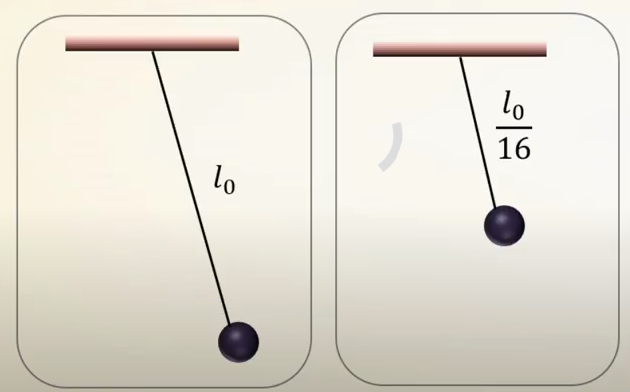A simple harmonic oscillator has a time period of 2s. What will be the change in the phase 0.25 s after leaving the mean position ?
T=2 sec
t=0.25 sec
sinωt=sin(2πτ)t
ϕ=ωt=2πT×t
=2π2×0.25
ϕ=π4.
Similar Questions
Knowledge Check
In a simple harmonic oscillator, at the mean position
A(a) kinetic energy is minimum, potential energy is maximum.B(b) both kinetic and potential energies are maximum.C(c ) kinetic energy is maximum, potential energy is minimum.D(d) both kinetic and potenteal energies are minimum.In. a simple harmonic oscillator, at the mean position
Akinetic energy Is minimum potential energy Is maximumBBoth kinetic and potential energy are maximumCkinetic energy Is maximum, potential energy Is minimumDBoth kinetic and potential energies are minimumA simple harmonic oscillator has time period T. The time taken by it to travel from the extreme position to half the amplitude is :
AT6BT4CT3DT2
A simple pendulum of length l0 can perform simple harmonic oscillations with a time period T0. If the length of the pendulum is decreased to l016 then the time time period of oscillation will become.

View SolutionThe equation of a simple harmonic oscillator with amplitude 5 cm and period 2 sec is if particle is starting from the mean positions is–
View SolutionA particle executing a simple harmonic motion has a period of 6 s. The time taken by the particle to move from the mean position to half the amplitude, starting from the mean position is
View SolutionA simple harmonic oscillator has a frequency of 2.5 Hz and an amplitude of 0.05m. What is the period of the oscillations?
View Solutionan object of mass 0.5 kg is executing simple harmonic motion. It amplitude is 5 cm and time period (T) is 0.2 s. What will be the potential energy of the object at an instant t=T4s starting from mean position. Assume that the initial phase of the oscillation is zero.
View Solution
